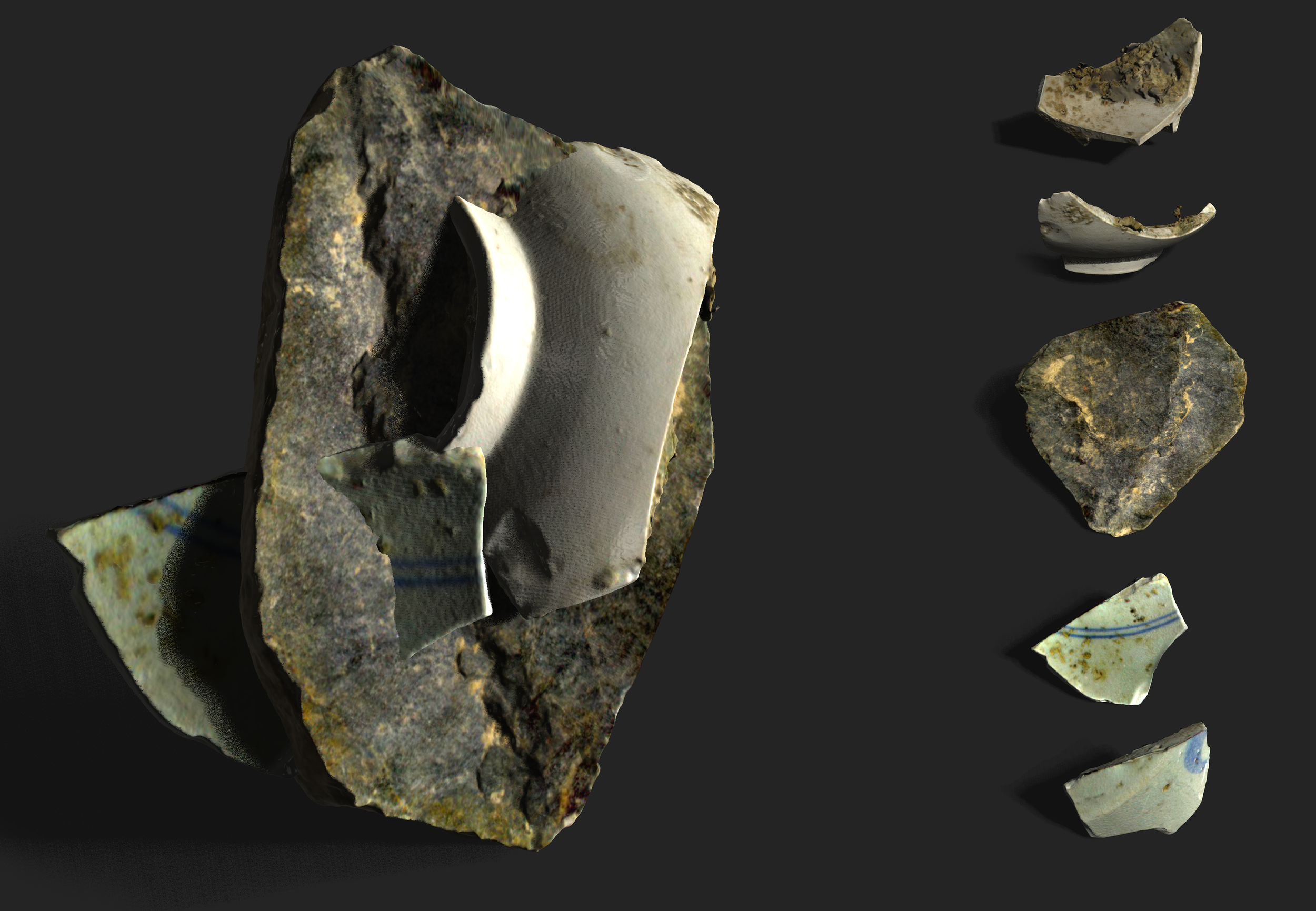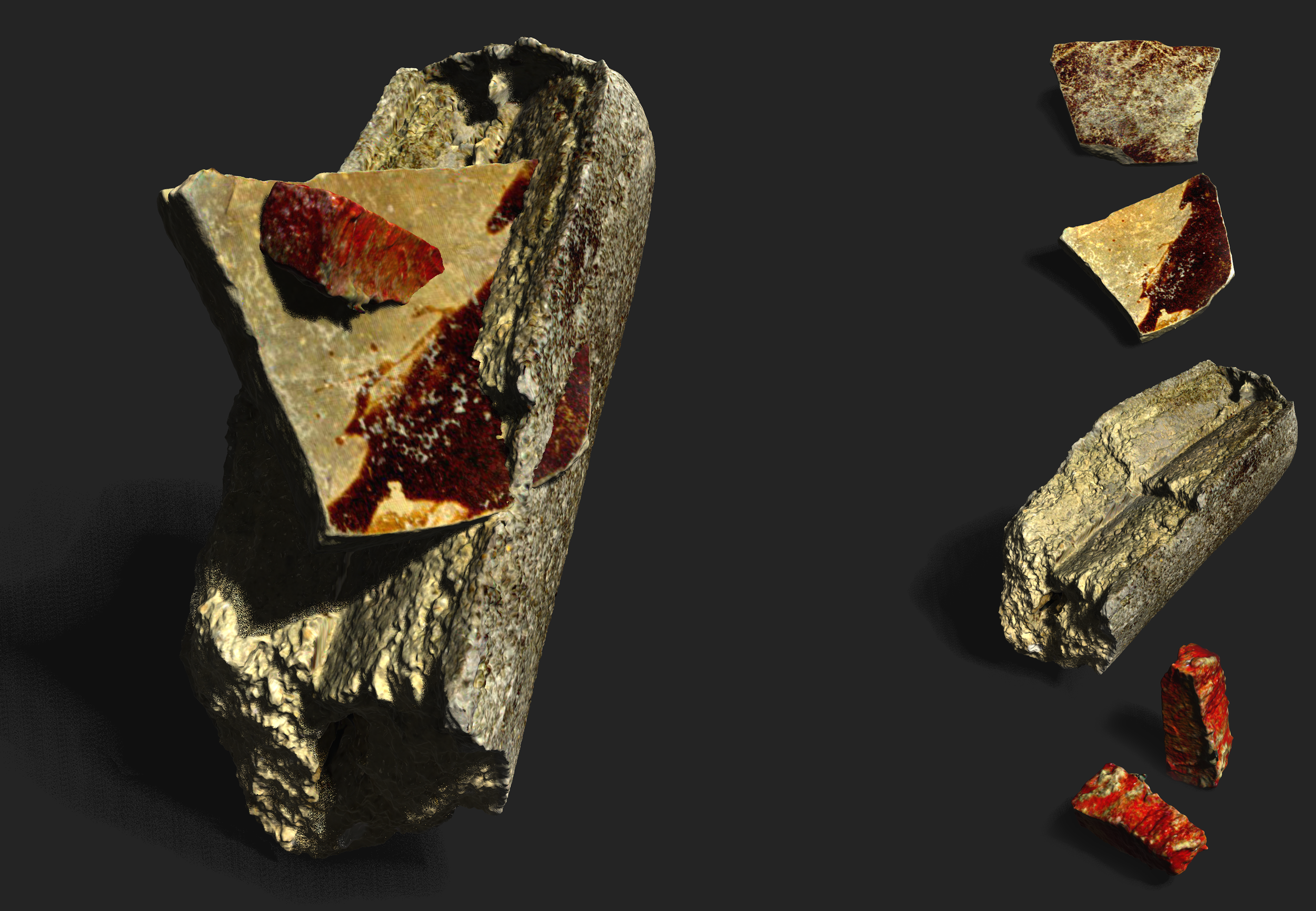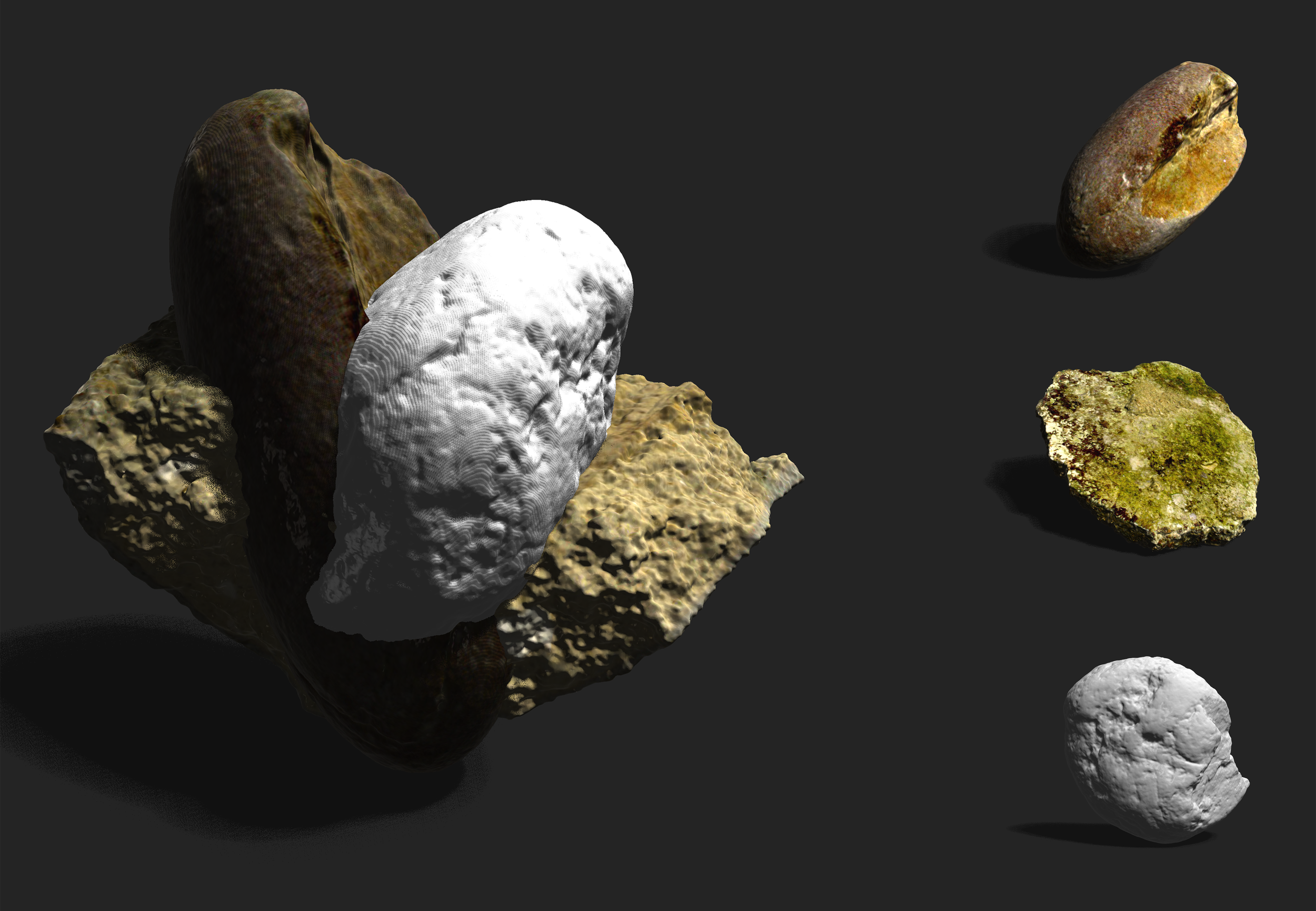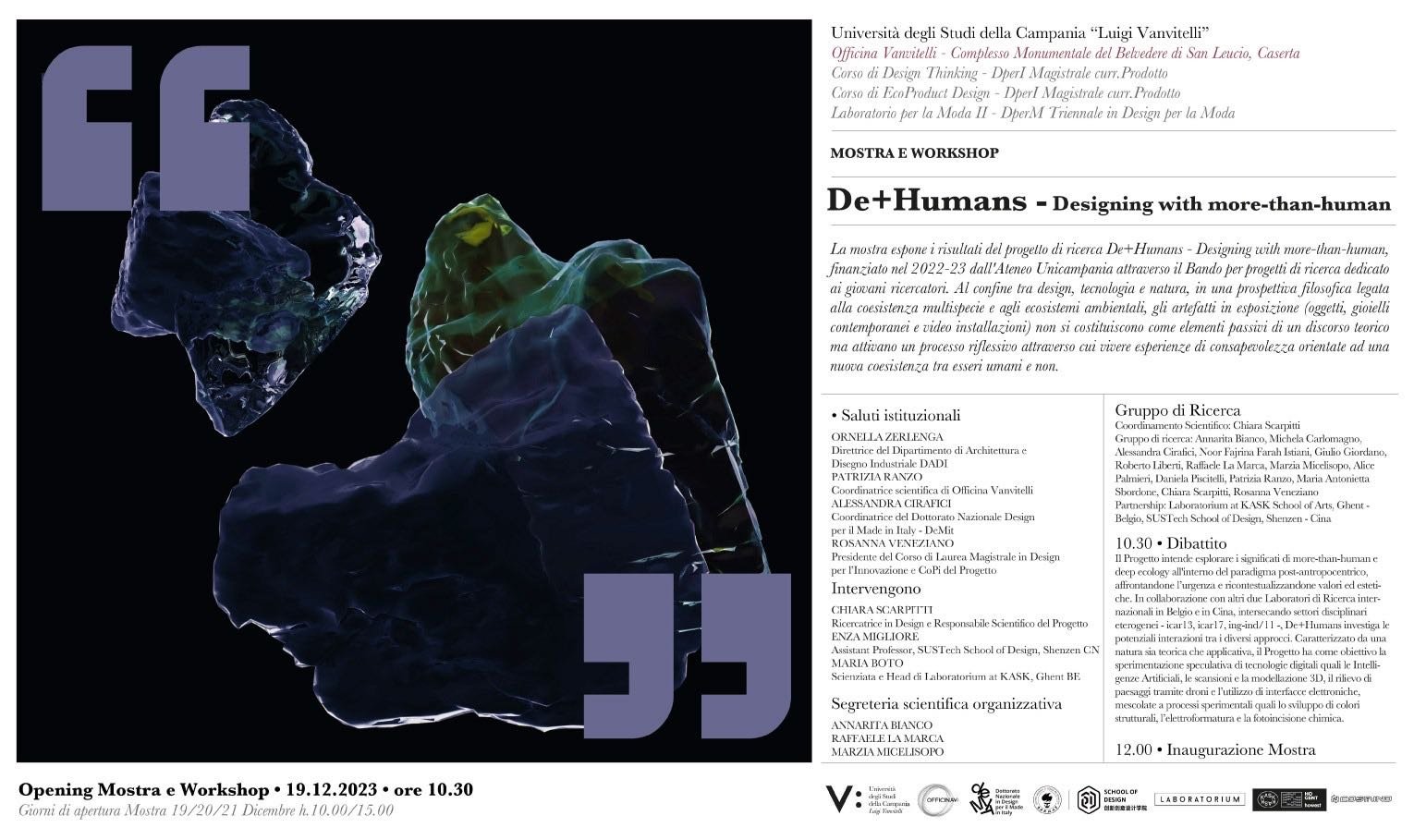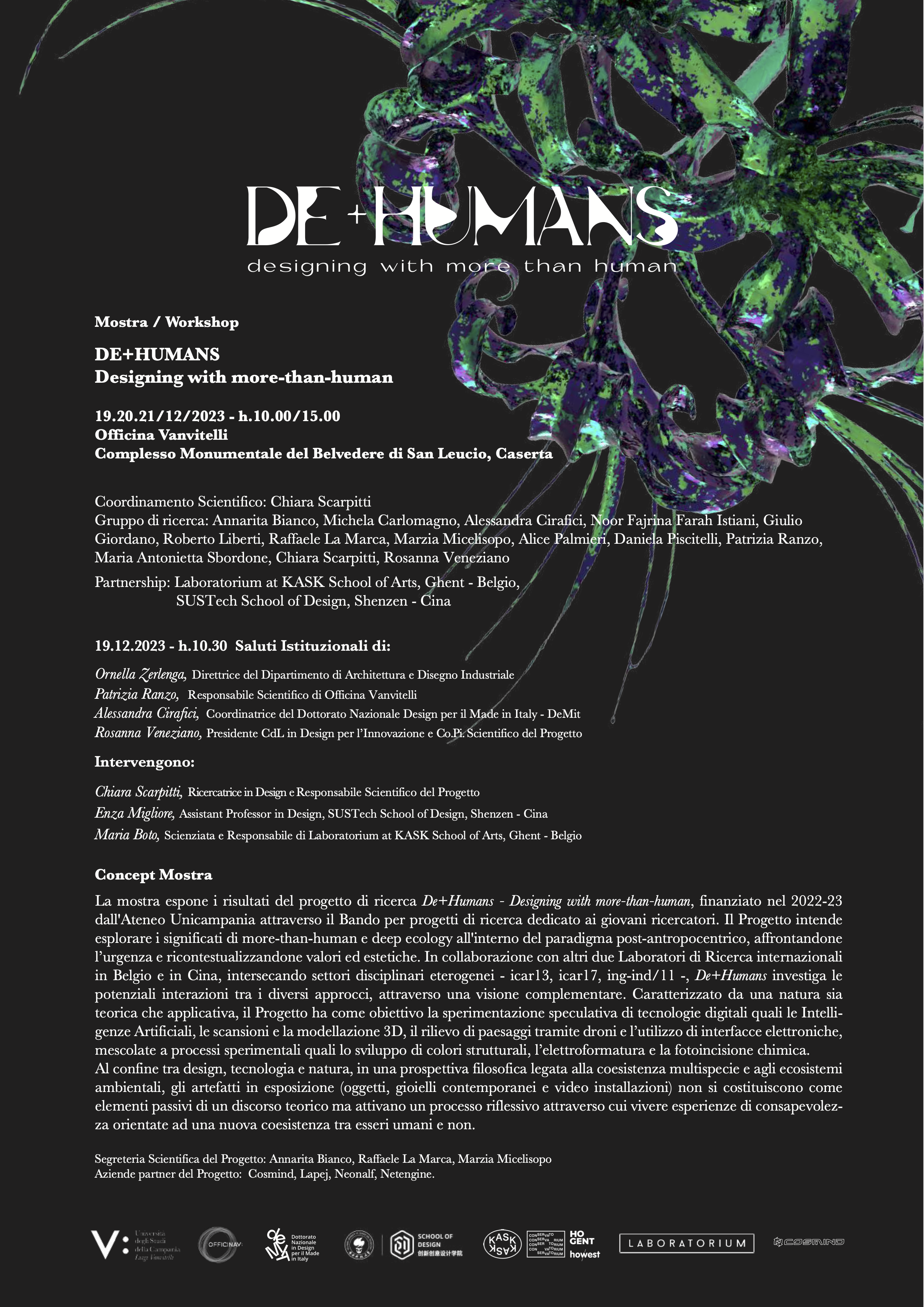Material Clusters at De-Humans, designing with more than human
Enza Migliore, Amedeo Martines
Collaborators: Prof. Min Li, Ran Che, Zhonghui Tang
Material Clusters. How fragmented materiality unveils imminent archeology to redesign the past and imagine the future.
Material Clusters is an exploration initiated during the ninth Bi-City Biennale of Urbanism \ Architecture of Shenzhen and Hong Kong (UABB), hosted by the Pingshan sub-venue at Dawan, an architectural heritage of Hakka village in Shenzhen.
It is part of a research project on material culture, urban ecology, and technology at Shenzhen’s SUSTech School of Design. During the Biennale, staff and students at the School of Design conducted field research and ethnographic activities at the historical site and with the local Hakka community. The Hakka people are an ethnic group with a distinct cultural identity, known for their migration history and unique customs.
They are a Han Chinese subgroup believed to have originated from the Central Plains of China. Over the centuries, the Hakka people have migrated to different regions of China and other parts of the world, including Southeast Asia and Taiwan. We have collected samples of materials from the ground of Dawan village in Shenzhen, one of the biggest urban agglomerates in China, and created a tangible and digital archive of objects, pictures, and 3D models used during this exploration as frames and tools to facilitate conversation and speculation. We use found “things” as interfaces for temporal, cultural, and natural encounters. The objects, mainly fragments of materials for the building construction, natural rocks, and industrial artifacts, have been 3D scanned to create a digital archive of unnoticed, hybrid interfaces.
The idea is to produce new opportunities to merge past, present, and future through design, humanistic thought, science, and technology and to use these materials as catalytic objects of reflection. We held a workshop where we asked the participants to use this collection to discuss and produce thoughts and visions about the meaning and future of the built environment and its transformations with time.
We are reinterpreting and reusing fragments of materials through digital representation and manipulation to prompt the vision of an entangled present. The Clusters series are metaphors of post-industrial, post-human, hybrid scenarios and artifacts where human and non-human, digital and material, merge in life’s ephemeral and amorphous shape. Here, we present partial working material as part of a more comprehensive research project, which includes a collection of 35 objects, a map of walls and ground textures, photographic documentation, material experiments and phygital crafting.
Digital Archaeologies – A workshop on time, culture, material and technologies
Enza Migliore, Ran Che, Prof. Min Li
3 March 2023
Digital Archaeologies reinterprets and reuses remains through design exploration and practice, which merge past, present, and future in a series of post-industrial hybrid scenarios and artifacts.
This exploration use digital as a medium and archaeologies as a subject, with four themes: "Future & Memory," "Technology & Vision(S)," "Time & Materials," and "Design & Nature," to discuss the relocation of values in the global era, the reconstruction of the meaning of material culture, the natural loss and local fabrication, the future of technology and manufacturing. As a response, we have collected samples of materials from historic sites in the village of Dawan and created a digital archive consisting of 3D models that will be shared during the first workshop as frames and tools to enable and facilitate the discussion. The goal is to produce new ideas on how to merge past, present, and future through design, humanistic thought, science, and technology.
More info: https://mp.weixin.qq.com/s/6TbHpGDKKEt4CCZ6nkttcw
Published Article: https://www.adfwebmagazine.jp/design/future-memories-for-the-bi-city-biennale-of-urbanism-architecture-of-shenzhen-and-hong-kong/
Video preview: https://www.bilibili.com/video/BV1Mb411o7aJ/?spm_id_from=333.999.0.0
